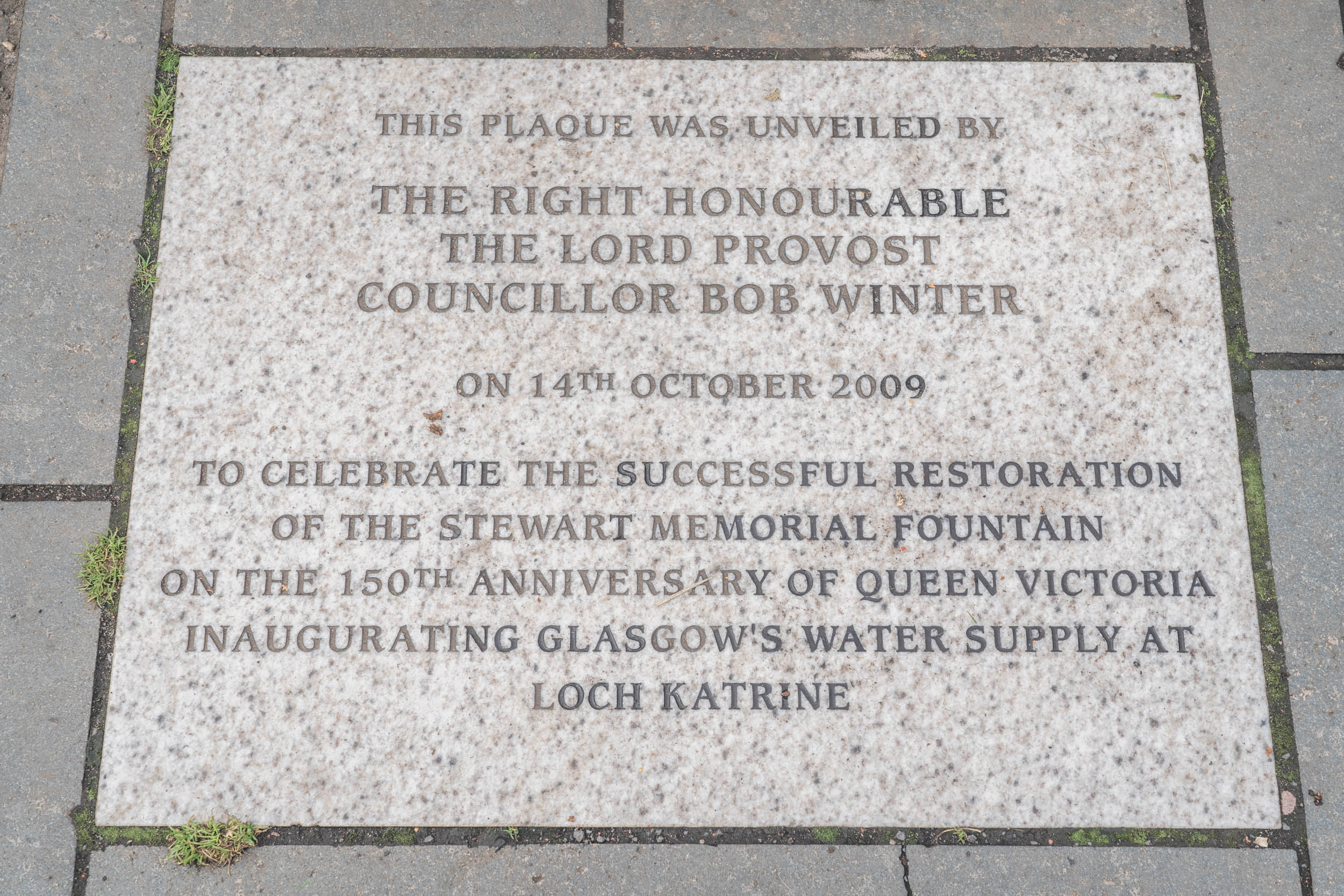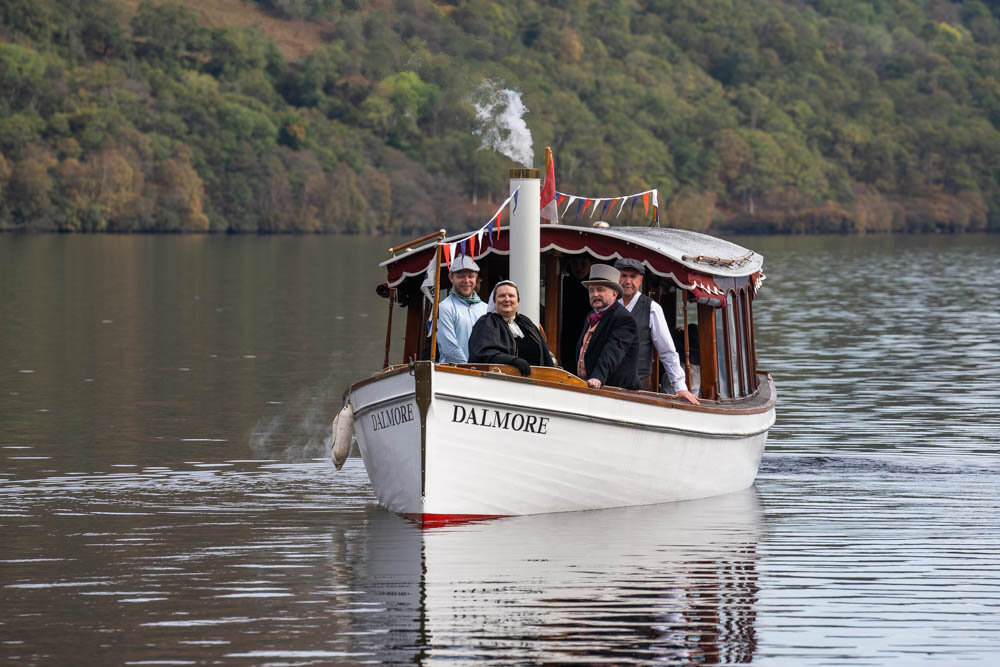Loch Katrine Aqueduct
Queen Victoria and Prince Albert actors at Stronachlachar
Celebrating Loch Katrine
This article was published on 14th October 2019, celebrating 160 years since Queen Victoria visited Loch Katrine to open the newly built aqueduct.
Queen Victoria at Loch Katrine
On 14th October 1859, Queen Victoria, accompanied by Prince Consort, Princess Alice and Princess Helena, visited Loch Katrine to open a new aqueduct.
The aqueduct takes water by gravity from Loch Katrine to the Milngavie and Balmore water treatment works before supplied to around 1.3 million people across Greater Glasgow and West-Central Scotland.
Loch Katrine Aqueduct
Victorian Waterworks
This Victorian megastructure is regarded as one of the world's greatest feats of engineering of its day and helped transform citizens' health, giving them clean water. The aqueduct continues in full use 160 years on.
The special anniversary of the royal opening was marked, 160 years to the day, with a series of special sailings on the Sir Walter Scott Steamship and Lady of the Lake cruise boats. Joining passengers on board were actors playing the parts of Queen Victoria and Prince Albert, along with members of Gartmore Theatre Company, dressed in Victorian costumes.
Victoria and Albert arriving at Stronachlachar
Marketing Services
Video, Photography & Websites
Royal Cottage, Stronachlachar
After arriving at Stronachlachar Pier on the steamship, the actors made the short journey to Royal Cottage, adjacent to the aqueduct. Access to the aqueduct and Royal Cottage is not available to the public. Special access to mark the anniversary was kindly provided to the actors and guests by Scottish Water.
Back in 1859, the Royal Cottage would have accommodated the royal family during their visit if the volume of the 21-gun salute tribute to Queen Victoria had not resulted in all of the windows smashing!
Steamship sailing past Royal Cottage
The visit of Queen Victoria in 1859 drew large crowds. So many, in fact that the carriages and coaches couldn’t cope. As a result, many people walked across the hills, putting up with terrible weather to reach the waterworks, close to the southern end of Loch Katrine.
Royal Cottage
Precisely 160 years n the actor portraying Queen Victoria recreated the historic scene at the aqueduct by reading a passage from the original speech:
“It is with much gratification that I avail myself of this opportunity of inaugurating a work which, both in its conception and its execution, reflects so much credit on its promoters, and is so calculated to improve the health and comfort of your vast population, which is rapidly increasing round the great centre of manufacturing industry in Scotland.
Such work is worthy of the enterprise and philanthropy of Glasgow, and I trust it will be blessed with complete success. I desire that you convey to the great community which you represent my warmest wishes for their continued prosperity and happiness.”
Recreating the opening of Loch Katrine Aqueduct
The royal party had travelled on steamship Rob Roy 2, Sir Walter Scott Steamship's predecessor. The current steamship has been sailing on the loch for nearly 120 years, named after the famous Victorian writer who set his 1810 poem Lady of the Lake and 1818 novel Rob Roy around Loch Katrine.
Due to the terrible weather on the day of the opening, Queen Victoria didn't see Loch Katrine at its best during that visit. Luckily, she came back a decade later, when conditions were much more favourable.
Loch Katrine Aqueduct
The Katrine Aqueduct
The Katrine Aqueduct comprises two aqueducts that are 34 and 23.5 miles in length from the loch to Milngavie north of Glasgow, which combined provide up to 50 million gallons of water every day.
The first was built to give Glasgow a proper water supply and tackle cholera and includes tunnels through mountainous terrain in the shadow of Ben Lomond and bridges over river valleys. The second was constructed to accommodate the rapid expansion of Glasgow, the ‘second city of the Empire’, in the late 19th century.
The entire Katrine Aqueduct scheme cost £3.2m to build, which would be about £320m in today’s prices.
It currently supplies about 110 million gallons of water per day to the two water treatment works, and it takes the water about 14 hours to travel along the aqueduct from Loch Katrine to the water treatment works.
The effect that the aqueduct had on the city of Glasgow is difficult to overstate. This new system that delivered fresh water from Loch Katrine replaced the need to draw water from wells and streams, a significant improvement for the health of the residents of Scotland’s largest city.
Commemoration Stone, unveiled by Queen Victoria 1860.
Purchase a See Loch Lomond T-Shirt
Kelvingrove Park Fountain
An impressive Gothic fountain was erected in Kelvingrove Park, Glasgow, in 1871. The fountain pays tribute to Robert Stewart, the driving force of the project. The fountain is carved with scenes that represent the Trossachs and the writing of Sir Walter Scott. It was restored for the 150th anniversary ten years ago, with additional features added to commemorate that milestone.
There are many features about Loch Katrine and its very special steamship on this website.
Dalmore
Joining the actors for the commemorations at Stronachlachar was Dalmore, a steam tug berthed at Trossachs Pier. The actors enjoyed a short sail onboard Dalmore before heading back to Trossachs Pier on the Lady of the Lake.
Dalmore, Loch Katrine
Thanks for reading
Words and photography by Paul Saunders. Visit Paul’s Marketing and Photography websites for details of his services in Scotland.
Please let us know if you found the guide helpful in the comments section below.

















Buy our guidebook, 101 Things to Do in Loch Lomond and the Trossachs, packed with attractions, views, and activities to enjoy.